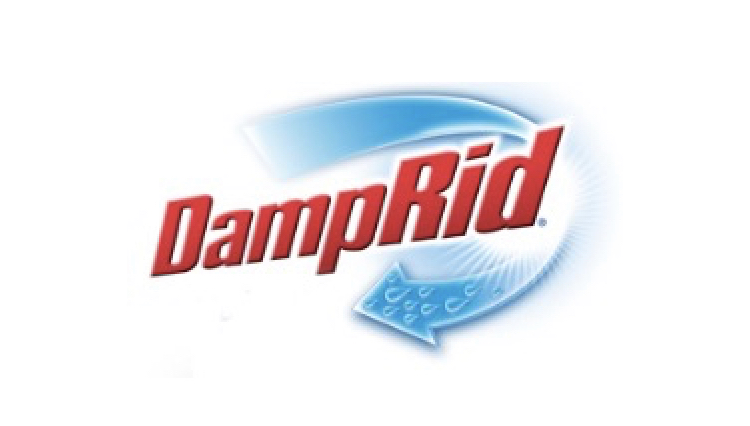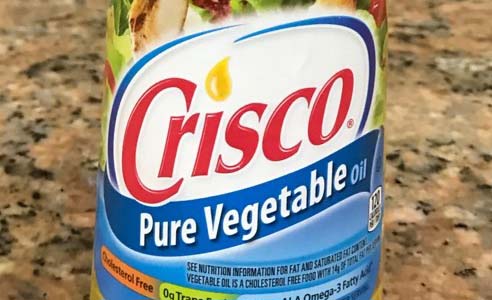
HOME WATCH MYTH
Add a capful of vegetable oil to the garbage disposal or dishwasher to lubricate the seals so you don’t have to turn on and run water.
It is well recognized that water is the number one cause of damage to a vacant home. Homeowners rightfully turn the water off when they leave their seasonal home. Many residents are hesitant to allow their home watch provider to turn their water on for fear they will forget to turn it off and damage will occur due to a leak. As a result, some home watch providers have suggested adding a capful of vegetable oil to your dishwasher to keep the seals lubricated. This is a myth and I would like to point out at the beginning of this blog, the importance of hiring a trained, insured & accredited home watch provider who uses an electronic reporting system that requires your home watch provider to turn off the water prior to completing the report and also requires photographic evidence the water is off.
Two common appliances in most homes, a Garbage Disposal & Dishwasher, use water to lubricate the seals for the motor shaft. I have heard from more than a few people who do home watch that an acceptable alternative to turning on the master water shut-off valve and running water through these appliances… is to add a capful of vegetable oil to the device prior to departing for the season. This blog will discuss the results of a test I ran simulating conditions that your appliance would see.
Test Conditions: I used a plastic food storage container and added ½ inch of water on the bottom and added 1 capful of pure vegetable oil to the container. I then let it sit for a period of four months and photographed the container each week or so to see what was happening. You will find pictures and descriptions below with my conclusions about this home watch myth & my recommendations at the end.
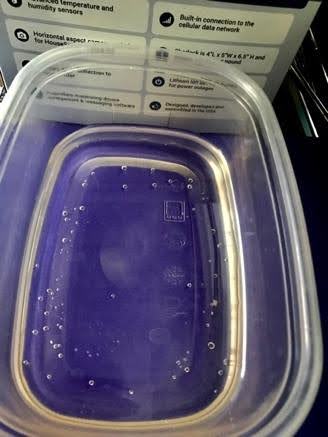
Week One
When the vegetable oil was added, it quickly, over the first few days, migrated to the edge the container. Since the oil collected around the edge, the water began to evaporate.
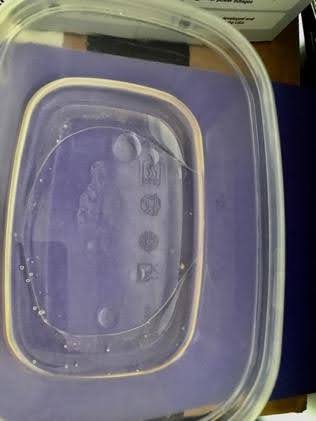
Month One
After a month the water in the container had evaporated, leaving the oil collected around the outer edge of the container.
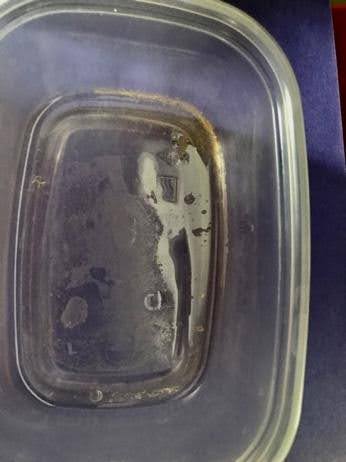
Month Two
After a month the water in the container had evaporated, leaving the oil collected around the outer edge of the container.
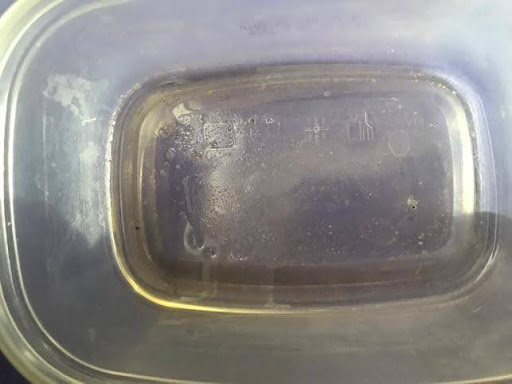
Month Four
The oil remaining in the container was beginning to discolor and was collecting dust. It is difficult to see in the photo above, but the bottom was covered with a sticky mix of oil and contaminants. I then poured out the remaining oil into the same cap I used to add it to be able to see how much of it had stayed in its liquid oil state.
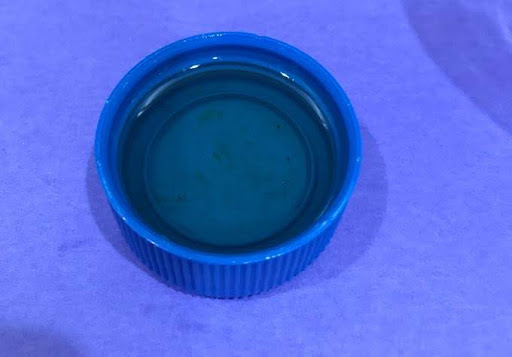
The result showed that about 90 percent of the oil was still in a liquid state. If you look closely the picture shows a lot of contaminates in the oil and the oil no longer has the original color of vegetable oil. This is consistent with what one could expect with vegetable oil in a dishwasher.
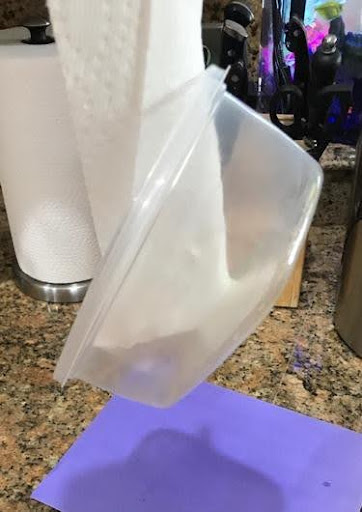
Next, I took a paper towel, and while using my thumb to press it to the bottom of the container, I attempted to lift the container up by the paper towel to test just how sticky the residual oil residue was on the bottom of the container.
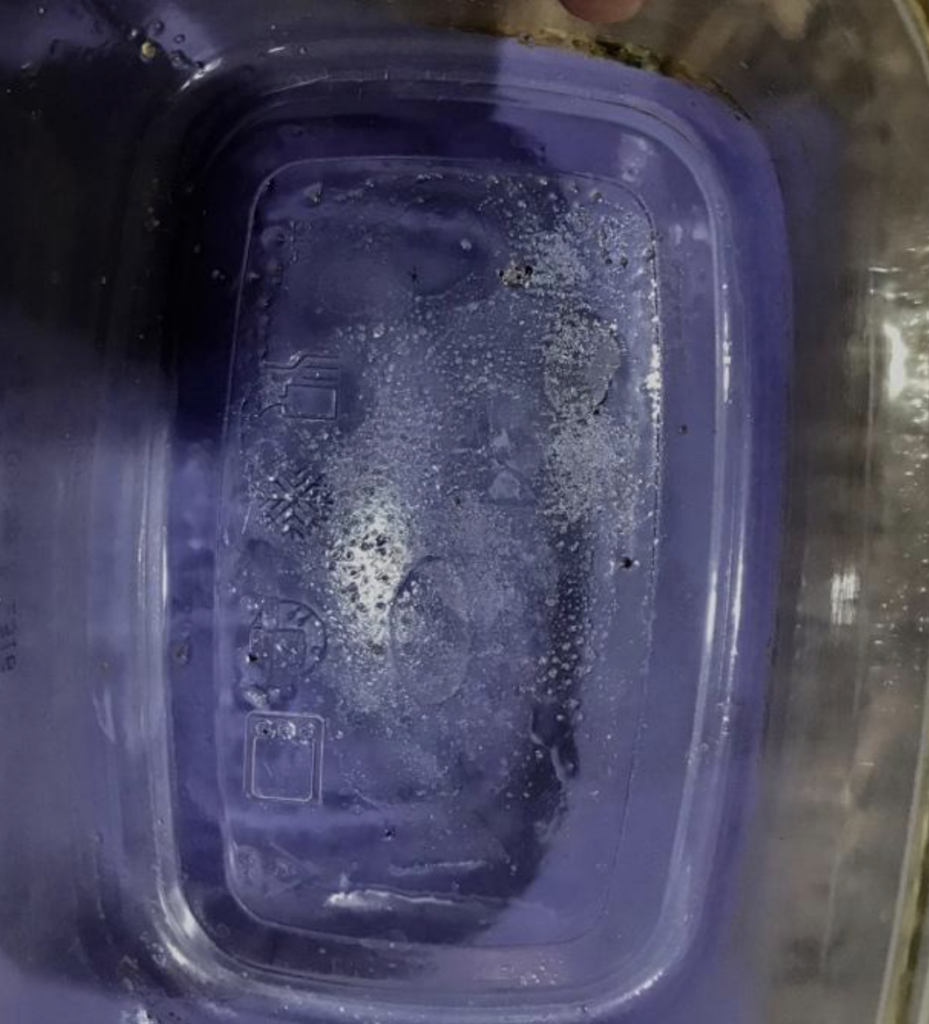
As the picture depicts, the residual oil was sticky enough to enable me to lift the container by the paper towel. See this close-up picture of the bottom of the container. You can see why this blog is titled a home watch myth. What is likely to occur if you put vegetable oil in a dishwasher in a vacant home?
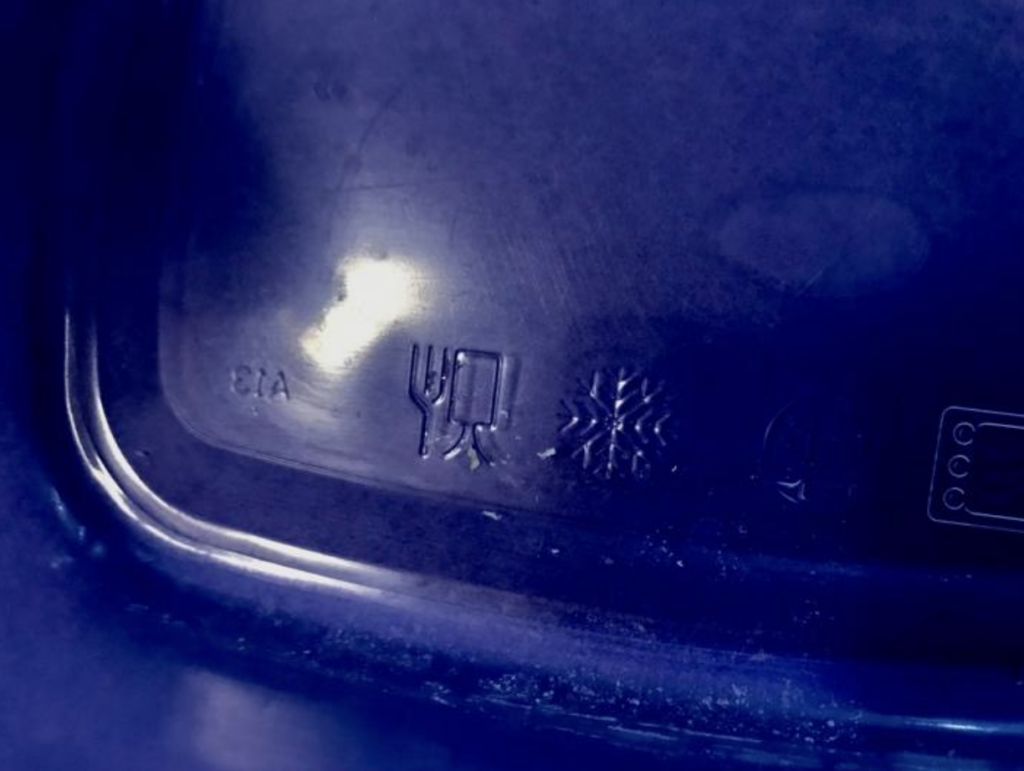
Finally, I then placed the container in the dishwasher and ran a complete cycle to see how the container cleaned up. After running a complete cycle, most of the residue was gone. What was remaining, however, was a sticky rubbery residue that needed to be scrubbed off to be completely removed.
Conclusion & Recommendation
The results are somewhat mixed. It is not clear at all that the vegetable oil actually lubricates the seal. What is clear is that the oil does not prevent the evaporation of the water. It’s also clear that the oil attracts dust and other contaminants and forms a sticky mess at the bottom that is not easily cleaned up. What is left behind is inconsistent with the purpose of the dishwasher, that of cleaning dishware and utensils that are placed in people’s mouths.
This author’s recommendation is to employ a Home Watch provider that is trained, insured, and accredited to provide a professional home watch inspection that includes turning on the water and running water in all the traps, brushing and flushing the toilets, running the disposal and periodically running the dishwasher in a short cycle to get the seals wet with water. Leave the dishwasher door ajar to prevent mildew. Make sure your Home Watch provider uses an electronic reporting system that will not let them close the report without shutting the main water valve off and providing a picture to prove to you the water is off. To read another blogger’s opinion on this, you may click on this LINK.



